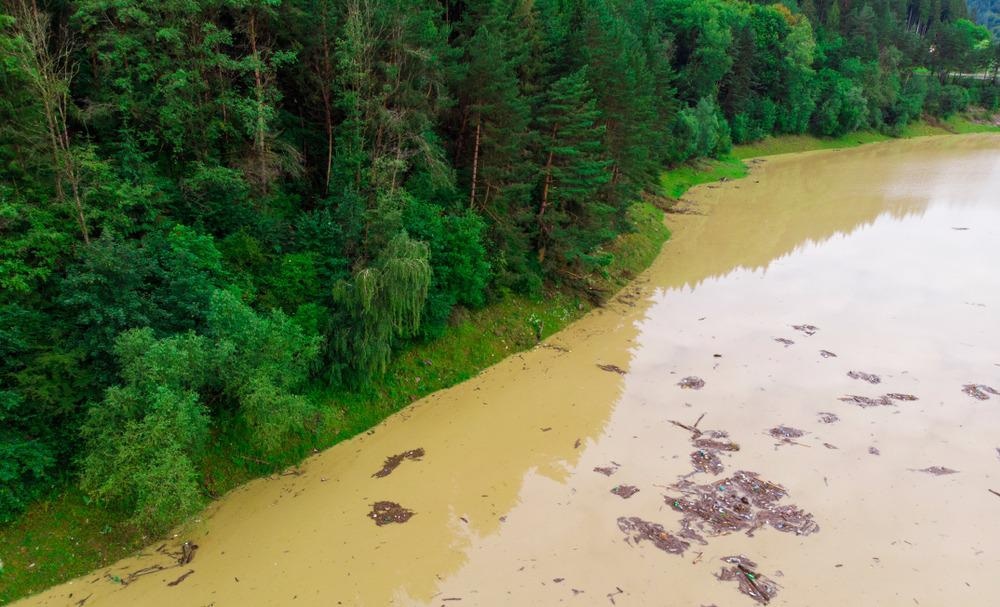
Image Credit: Ioan Panaite/Shutterstock.com
Nanotechnology is significantly enhancing and revolutionizing many fields of science and technology. Medicine, IT, energy, security, food safety, and environmental science, to name a few, are some of the areas that have been notably improved with nanotechnology. Here, we specifically discuss the potential nanotechnology has in the field of environmental protection, particularly, in driving a future of cleaner aquatic environments.
Using Nanotechnology to Clean Up Natural Water Sources
Nanotechnology utilizes nanoparticles, which, due to their incredibly small size, have unique and beneficial properties that the materials do not have at larger particle sizes. Nanotechnology leverages these benefits to develop new technologies that previously were not possible. In terms of environmental protection, researchers are using nanotechnology to develop new methods of cleaning contaminants from our air and water supplies, as well as developing sustainable technologies that mitigate the negative impact of human activities on the environment by removing greenhouse gases from the atmosphere.
Nanotechnology has been developed to help clean up and monitor pollution levels of contaminated water sites in numerous ways. Firstly, it helps establish accessible and affordable methods of cleaning natural drinking water sources. These methods allow for rapid, low-cost detection and treatment of water impurities - technology that is invaluable to developing regions where water safety is not secured.
Engineers have also used nanotechnology to create thin-film membranes with nanopores to allow for energy-efficient desalination. This technology can filter two to five times the volume of water that is within the realms of current systems. Scientists have also used nanotechnology to establish new ways to clean up industrial water pollutants from groundwater sources. Finally, scientists have successfully developed a method of cleaning oil from water. The innovation uses a nanofabric "paper towel” made of tiny wires of potassium manganese oxide woven together that can absorb 20 times its own weight in oil.
There are many innovative nanotechnology methods that have been developed to clean up natural water sources. One particularly impactful use of nanotechnology in this field has been the successful clean-up of an entire ecosystem of roughly 50 hectares in Peru.
Reviving Polluted Wetlands with Nanotechnology
Japanese-Peruvian scientist, Marino Morikawa created a nano-bubbling system that produces bubbles 10,000 times smaller than those produced for bubbly soft drinks. Because of their uniquely small size, the bubbles can float to the surface easily, a function that Morikawa leveraged - using these bubbles to transfix to viruses and bacteria in the water. Morikawa also developed clay biological filters capable of holding pollutants at the water’s surface where they can be decomposed by natural bacteria.
In deploying his nanotechnology methods in wetlands in Peru’s Chancay district, Morikawa created a clean environment, enough to encourage migratory birds to return to the area. The Chancay district accounts for around 50 hectares of wetland and is positioned just north of Lima. Morikawa began his work in the region back in 2010, relying on his own finances and resources.
The inspiration to restore the wetland areas came from Morikawa's father, who informed his son that the area where they had gone fishing during Morikawa's childhood had degraded and become polluted. Morikawa embarked on a mission to clean up the area, utilizing his degree in environmental science from Tsukuba University, Japan. On visiting the wetlands, Morikawa found that illegal sewage and landfill had polluted the area and forced wildlife to retreat. At this point, the wetlands were a dirty swamp covered with aquatic plants.
It was Morikawa’s goal to establish a way to clean up the lakes without using harsh chemicals that cause further harm to the environment. To do this, he developed the micro-nanobubbling system, consisting of tiny bubbles that remain in the water for four to eight hours. Morikawa invented clay biological filters that can capture inorganic pollutants (e.g. heavy metals and minerals) and allow them to be decomposed by bacteria by holding them to the water’s surface.
The results of Morikawa’s work in the wetlands were impressive and signifies the potential use of nanotechnology in cleaning up lakes in other locations. In just 15 days, the wetlands established themselves to a level that would have taken six months in the lab. The method demonstrates how, with some help, nature can do its job.
By 2013, Morikawa’s intervention had allowed the wetlands to be once again populated by birds. In just three years, 60% of the area was home to migratory birds, such as Franklin gulls, that had abandoned the region. Following this, Morikawa turned his attentions to Lake Titicaca and the Huacachina lagoon where he used his technology to clean up the water in these environmentally diverse locations.
References and Further Reading
How technology saved a contaminated lake in Peru. Fino Menezes. Bright Vibes. Available at: https://brightvibes.com/1236/en/discover-how-one-man-cleaned-a-contaminated-lake-in-peru-using-nano-bubbles
Nagar, A. and Pradeep, T., 2020. Clean Water through Nanotechnology: Needs, Gaps, and Fulfillment. ACS Nano, 14(6), pp.6420-6435. https://pubs.acs.org/doi/10.1021/acsnano.9b01730
Nanotechnology and the Environment. National Nanotechnology Innovative Workshop. Available at: https://www.nano.gov/sites/default/files/pub_resource/nanotechnology_and_the_environment_app_imp.pdf
Disclaimer: The views expressed here are those of the author expressed in their private capacity and do not necessarily represent the views of AZoM.com Limited T/A AZoNetwork the owner and operator of this website. This disclaimer forms part of the Terms and conditions of use of this website.